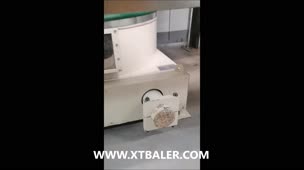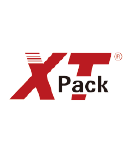
No. 158, Qingnian East Road, Xiting Industry Park, Nantong City 226321, P.R. China

Algeria

Argentina

AE

Egypt

Ethiopia

Australia

Pakistan

Bahrain

Brazil

Belgium

Poland

North Korea

Russia

Ecuador

Pilipines

Columbia

Canada

Kuwait

Lebanon

Malaysia

United States

Bangladesh

Mexico

South Africa

Nigeria

Norway

Japan

Saudi Arabia

Sri Lanka

Thailand

Tunisia

Turkey

Venezuela

Singapore

New Zealand

Armenia

Iran

India

Indonesia

UK

Jordan

Vietnam

Chile

China
XTPACK 400W7280 Auto Baler Machine

XTPACK 400W7280 Auto Baler Machine

XTPACK 600W11075 Horizontal Balers

XTPACK 600W11075 Horizontal Balers

XTPACK 1500W110110 Horizontal Balers

XTPACK 1500W110110 Horizontal Balers

XTPACK 600W11075 Horizontal Balers

XTPACK 600W11075 Horizontal Balers

XTPACK 1500W110110 Horizontal Balers

XTPACK 500LE15076 Vertical Balers

XTPACK 300LJ12080 Vertical Balers

XTPACK 400W7280 Auto Baler Machine


How to Plan Corrugated Carton Production Factory-Waste paper& Wastewater Treatment
Outline of Manufacturing Process and Materials UtilizedThe manufacture of corrugated packaging can be roughly classified into two processes: the containerboard combining process, which glues one or more sheets of fluted corrugating medium to one or more flat facings of linerboard; and the box manufacturing process, which is used to assemble the corrugated sheets into boxes. Figure 1 depicts the typical manufacturing process flow and the auxiliary facilities that are used at a corrugated packaging plant.Figure 1 Overview of Manufacturing Process Flow for Corrugated Packaging Wastewater Treatment Process(1) Discharge Routes for Wastewater and WastesAlthough actual discharge routes for wastewater and wastes from the container board combining process (corrugator) and the box-manufacturing process (printing / gluing processes only) will vary, depending upon the facilities and geographic conditions available to each particular corrugated packaging manufacturer (discharge into rivers or sewers), a typical flow is shown in Figure 5.Figure 5 Discharge Routes for Wastewater and Wastes * “Glue balls” are lumps of gelatinized combining adhesive within the glue vat, caused by excessive ambient heat. (2) Wastewater Treatment MethodsThe wastewater generated by plants that manufacture corrugated packaging can be classified into the following categories: household wastewater /domestic wastewater; rainwater; wastewater from clean up of combining adhesive (corrugator and glue making machine) and wastewater from cleanup of printing ink and joint adhesive. Household wastewater / domestic wastewater and wastewater from processes containing substances designated by the PRTR system, except for rainwater, are generally treated through a combination of several methods listed in Table 3.Table 3 Types of Wastewater Treatment Methods2. Class I Designated Chemical Substances Contained within Materials andEnergies Utilized in the Corrugated Packaging IndustryTable 4 indicates the major Class I Designated Chemical Substances contained in the materials and energies utilized for the manufacture of corrugated packaging, which have been investigated by the member companies of Japan Corrugated Case Association (JCCA).Table 4 Major Class I Designated Chemical Substances Contained in Materials and 3. Corresponding Class I Designated Chemical SubstancesThe list of Class I Designated Chemical Substances shown in Table 5, below, was prepared from the general usage examples obtained as a result of an investigation conducted at 121 of JCCA member companies’ plants. These chemical substances comprise 1% or greater of the particular product, which itself is handled in annual quantities that may exceed 1 ton. In addition, these chemical substances may result in the release of dioxins from designated facilities, as stipulated by the Law Concerning Special Measures against Dioxins(for corrugated packaging plants, such designated facilities would be all incinerators). For chemical substances other than those listed in the table, the MSDS should be obtained, in order to confirm whether such chemical substances are subject to reporting. Table 5 List of Corresponding Class I Designated Chemical SubstancesIn addition, there are certain types of flexo inks (currently, flexo inks are utilized most commonly) that contain approximately 2% of the Class I Designated Chemical Substances shown in the aforementioned Table 4. However, as the quantities of these particular inks used (10 kg and less) are far less than the quantities specified by the law (1 t or more), these flexo inks are not subject to reporting. Quick drying inks have been designated as products that are subject to reporting. Regardless of the particular type or color of these inks, they all contain a relatively large percentage of ethylene glycol, which is a Class I Designated Chemical Substance, as a primary ingredient in the solvent. In addition, there is a strong possibility that the annual quantities handled will exceed 1 ton. --If there is Copyright Dispute about the content, please Contact us to Delete.
2374 views0 0

How to plan corrugated carton production factory –Waste paper & wastewater treatment
Outline of Manufacturing Process and Materials UtilizedThe manufacture of corrugated packaging can be roughly classified into two processes: the containerboard combining process, which glues one or more sheets of fluted corrugating medium to one or more flat facings of linerboard; and the box manufacturing process, which is used to assemble the corrugated sheets into boxes. Figure 1 depicts the typical manufacturing process flow and the auxiliary facilities that are used at a corrugated packaging plant.Figure 1 Overview of Manufacturing Process Flow for Corrugated Packaging Wastewater Treatment Process(1) Discharge Routes for Wastewater and WastesAlthough actual discharge routes for wastewater and wastes from the containerboard combining process (corrugator) and the box-manufacturing process (printing / gluing processes only) will vary, depending upon the facilities and geographic conditions available to each particular corrugated packaging manufacturer (discharge into rivers or sewers), a typical flow is shown in Figure 5.Figure 5 Discharge Routes for Wastewater and Wastes * “Glue balls” are lumps of gelatinized combining adhesive within the glue vat, caused by excessive ambient heat. (2) Wastewater Treatment MethodsThe wastewater generated by plants that manufacture corrugated packaging can be classified into the following categories: household wastewater /domestic wastewater; rainwater; wastewater from clean up of combining adhesive (corrugator and glue making machine) and wastewater from cleanup of printing ink and joint adhesive. Household wastewater / domestic wastewater and wastewater from processes containing substances designated by the PRTR system, except for rainwater, are generally treated through a combination of several methods listed in Table 3.Table 3 Types of Wastewater Treatment Methods2. Class I Designated Chemical Substances Contained within Materials andEnergies Utilized in the Corrugated Packaging IndustryTable 4 indicates the major Class I Designated Chemical Substances contained in the materials and energies utilized for the manufacture of corrugated packaging, which have been investigated by the member companies of Japan Corrugated Case Association (JCCA).Table 4 Major Class I Designated Chemical Substances Contained in Materials and 3. Corresponding Class I Designated Chemical SubstancesThe list of Class I Designated Chemical Substances shown in Table 5, below, was prepared from the general usage examples obtained as a result of an investigation conducted at 121 of JCCA member companies’ plants. These chemical substances comprise 1% or greater of the particular product, which itself is handled in annual quantities that may exceed 1 ton. In addition, these chemical substances may result in the release of dioxins from designated facilities, as stipulated by the Law Concerning Special Measures against Dioxins(for corrugated packaging plants, such designated facilities would be all incinerators). For chemical substances other than those listed in the table, the MSDS should be obtained, in order to confirm whether such chemical substances are subject to reporting. Table 5 List of Corresponding Class I Designated Chemical SubstancesIn addition, there are certain types of flexo inks (currently, flexo inks are utilized most commonly) that contain approximately 2% of the Class I Designated Chemical Substances shown in the aforementioned Table 4. However, as the quantities of these particular inks used (10 kg and less) are far less than the quantities specified by the law (1 t or more), these flexo inks are not subject to reporting. Quick drying inks have been designated as products that are subject to reporting. Regardless of the particular type or color of these inks, they all contain a relatively large percentage of ethylene glycol, which is a Class I Designated Chemical Substance, as a primary ingredient in the solvent. In addition, there is a strong possibility that the annual quantities handled will exceed 1 ton. --If there is Copyright Dispute about the content, please Contact us to Delete.
1635 views0 0

Nancy Chen
Sales Manager
Industry experience:13 Year
language:Chinese,English,Phasa Tha
Responsible area:
Contact